Somewhere in a vast concrete office block in Moscow, during the height of the Soviet Union, sat a team of suave, architects and engineers with thick dark rimmed glasses who devoted their lives to designing Soviet Issue Fences. No doubt in accordance with exacting soviet regulations, the Soviet Fence Design and Specification Department* were in charge of maintaining and updating a comprehensive range of fence designs that their colleagues could choose from when designing a new city, micro district, park, factory, highway, missile silo or submarine base.

It was probably quite an achievement getting one of your designs approved for inclusion in the the Soviet Fencing Bible*, a catalogue of over 1000 concrete and metal fence designs and specifications for use across the Soviet Empire. I imagine the Soviet Fence Design and Specification Department being the blueprint for Ikea, where a small team of co-workers turned out endless industrialised fence designs named after each other and their pets.
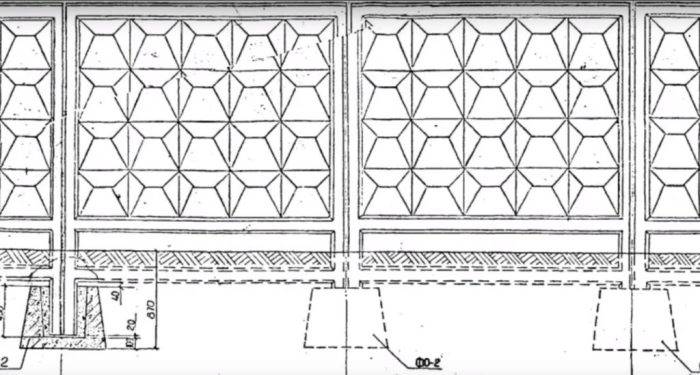
Half-way through writing this blog, I thought it might be worth doing some actual research rather than basing it all on my imagination. It turns out that I am not the only one intrigued about the people behind Soviet fence designs. Based on an exhaustive five minute google search (in English!) at least one other person has asked the immortal question; where did these fences come from and who created them?
According to my fellow Soviet Issue Fence aficionado, the blogger 'Chingum', the blueprint above is of the famous "rhombus" fence officially known as "Plate Fence PO-2"! Apparently it was designed by the Soviet fence engineer Boris Lahman in 1971 while working at Mosgosstroymaterialy, which I presume is the real name of the Soviet Fence Design and Specification Department in Moscow that I made up.
Fence nerd Chingum, states that Lahman proposed the "rhombus" as one of three designs he submitted to 'the Commission'. Lahman won a medal and a prize of 50 rubles for Plate Fence PO-2 and it went into production in 1974 in Moscow. Plate Fence PO-2 was cheap and easy to produce and was an effective sound barrier due to its mass concrete form but also perhaps due to its characteristic convex rectangles or “rhombuses” that might have had significant acoustic damping properties....

Some Soviet Issue Fences were seemingly designed to celebrate the Soviet Unions' technological prowess especially in aerospace. This striking piece of concrete modular fencing is a masterpiece in Soviet propaganda and probably celebrates the Soviets Union's achievement of launching their version of the supersonic Concorde aircraft, the Tupolev TY-144, in 1968, one month before their Anglo-French competitors. I expect this beauty was standard issue back in the late sixties and maybe even the great Boris Lahman had a hand in it?
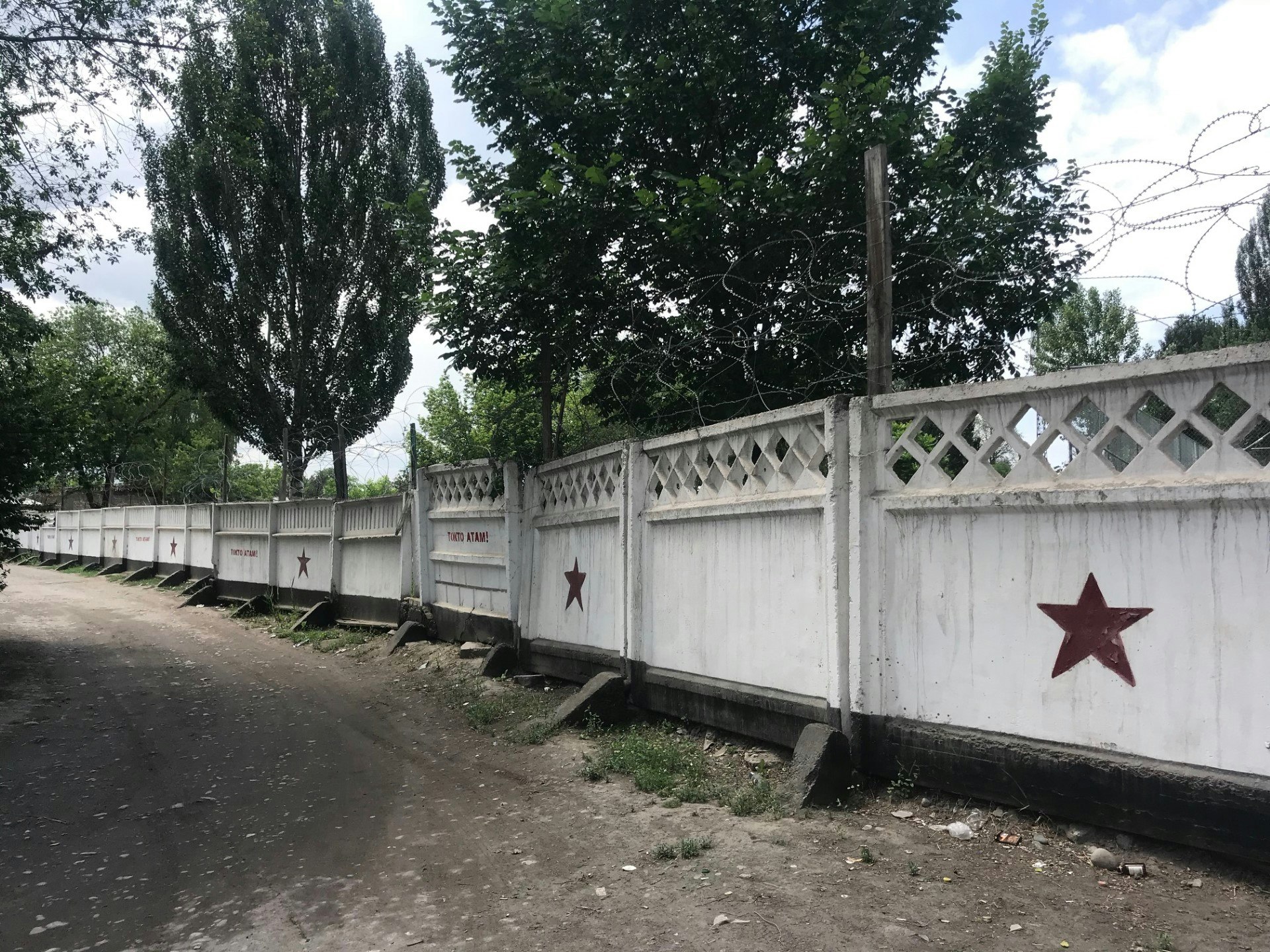
I stumbled across this striking version of the classic concrete fence while walking from the spectacular Bishkek Bus Station to the equally impressive Great Chuy Canal - it seems like it's the perimeter to an army base hence the endorsement with a soviet star.

Not all Soviet Issue Fences however were modular concrete megaliths. The team were adept at designing very artistic fences, especially from metal, some were even romantic such as the much loved heart design used to adorn the perimeters of public parks, squares and schools etc. Note to self: wasn't everything 'public' in the Soviet Union? This specimen was spotted in the 6th micro-district of Bishkek in the south east of the capital city of what is now the Kyrgyz Republic but which during Soviet times was Frunze in the Kirghiz Soviet Socialist Republic.
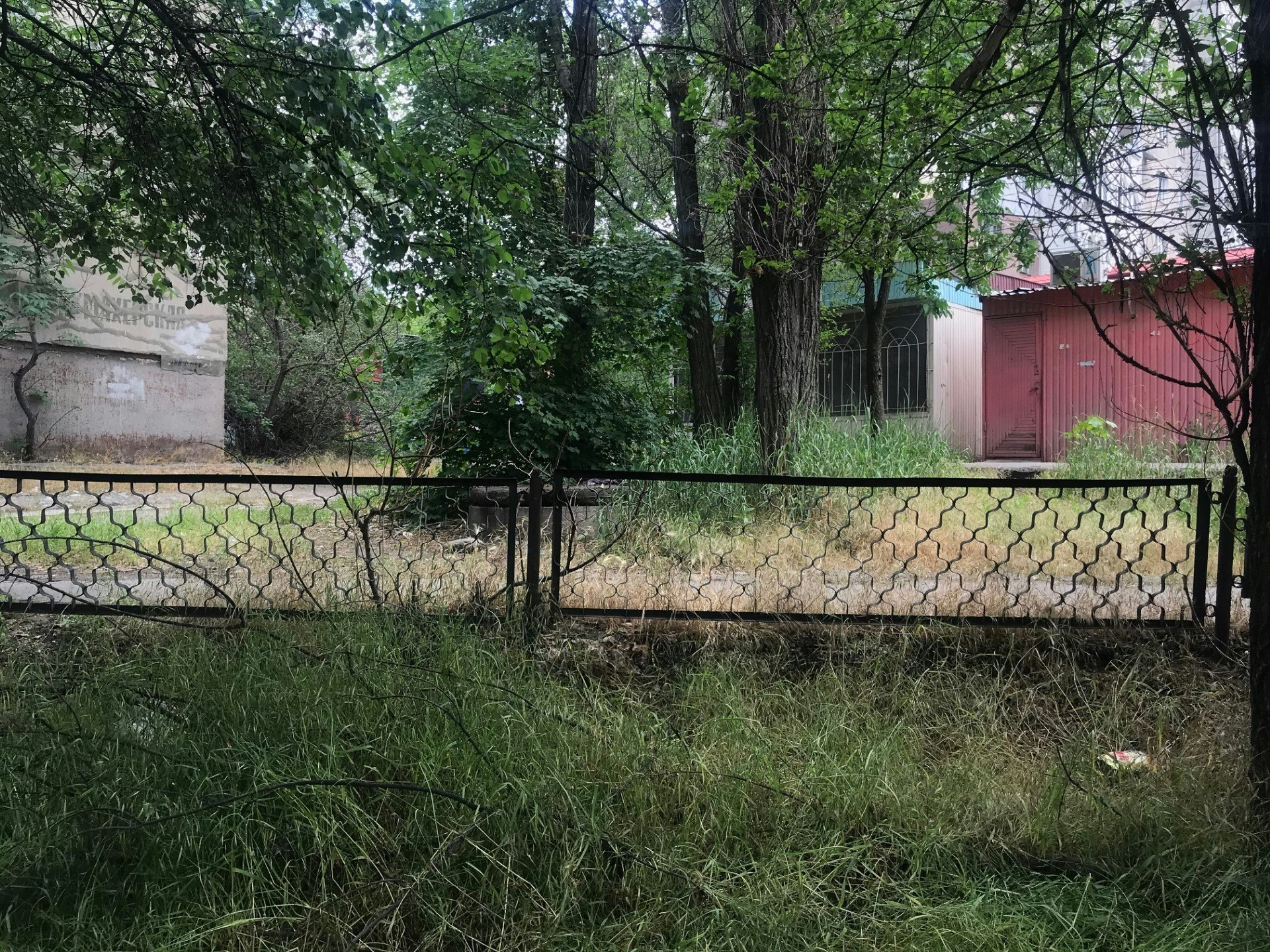
The Micro Districts of Bishkek are in-fact a soviet fence spotters dream - especially of the metal variety. Built in the late 60's of the 20th Century, the Micro Districts consist of communities of low rise (5 storey) to medium rise (11 storey) pre-fabricated concrete apartment buildings with leafy communal gardens, play and exercise grounds, schools and parks etc all interwoven amongst the residential buildings.

Most of the metal fences are knee to waist high, like the beauties above, and are 'transparent' in that you can see through them, so as not to obstruct views but to ever-so-gently delineate different levels of access along the public-private spectrum or between green areas and roads for example. Metal fencing to the boundaries of schools etc in the micro districts are higher, but still transparent. Fortunately I have captured here, for prosperity, many examples of the various types of metal fences that adorn the micro districts of Bishkek! Enjoy!
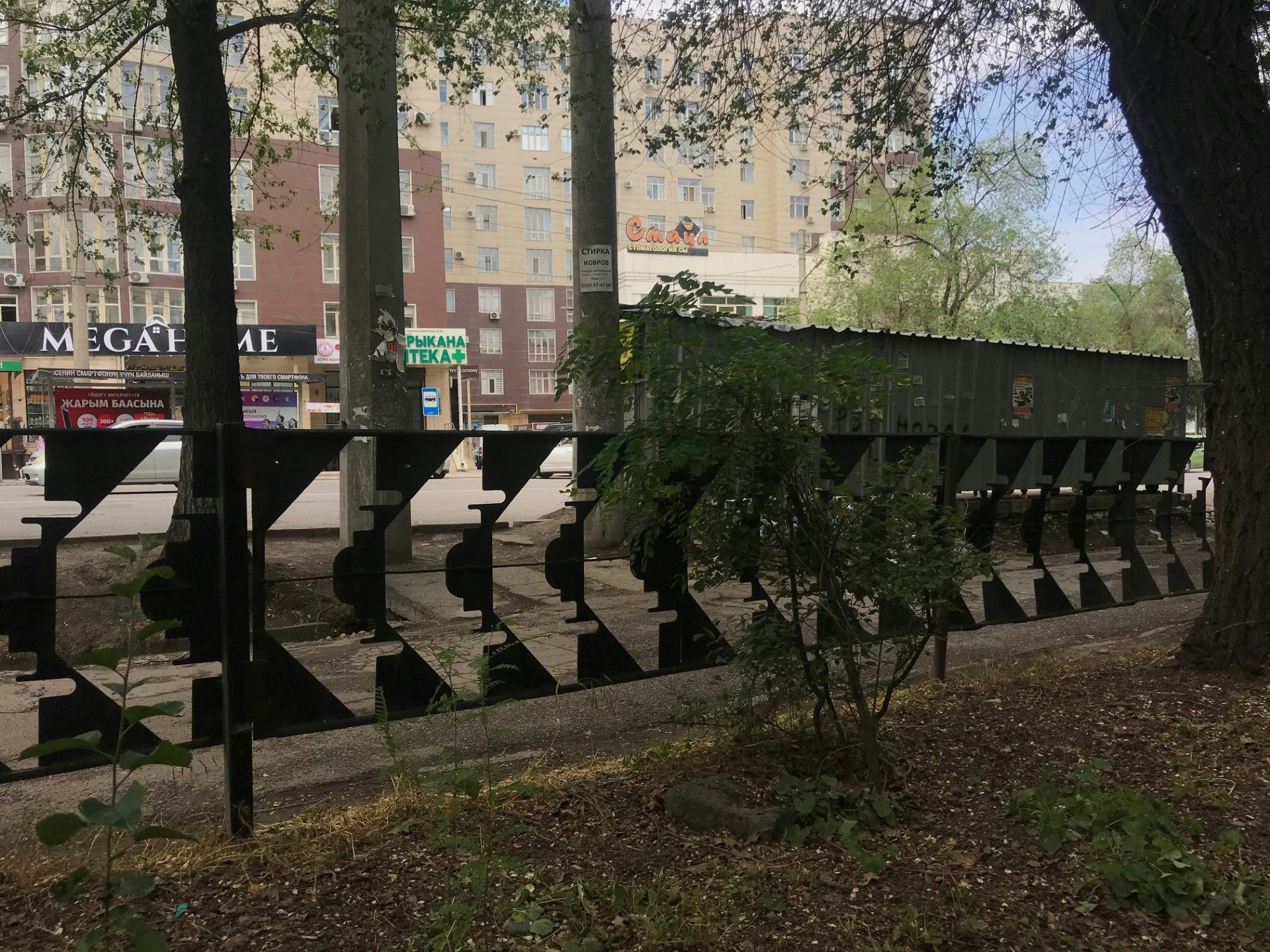
The impressive black sheet metal fence above that separates the open space of Micro District (MD) Five with the main road that runs between MD5 and MD6, is similar to the fencing spotted at the car park, below, close to the city's Central Heating Plant that produces all the hot water for the city's soviet era centralised heating system which pipes water all over the city into residential and commercial buildings etc - but thats another storey! The main difference between the two fences is that the pattern of the one above runs vertically and the one below, around the carpark, runs horizontally.
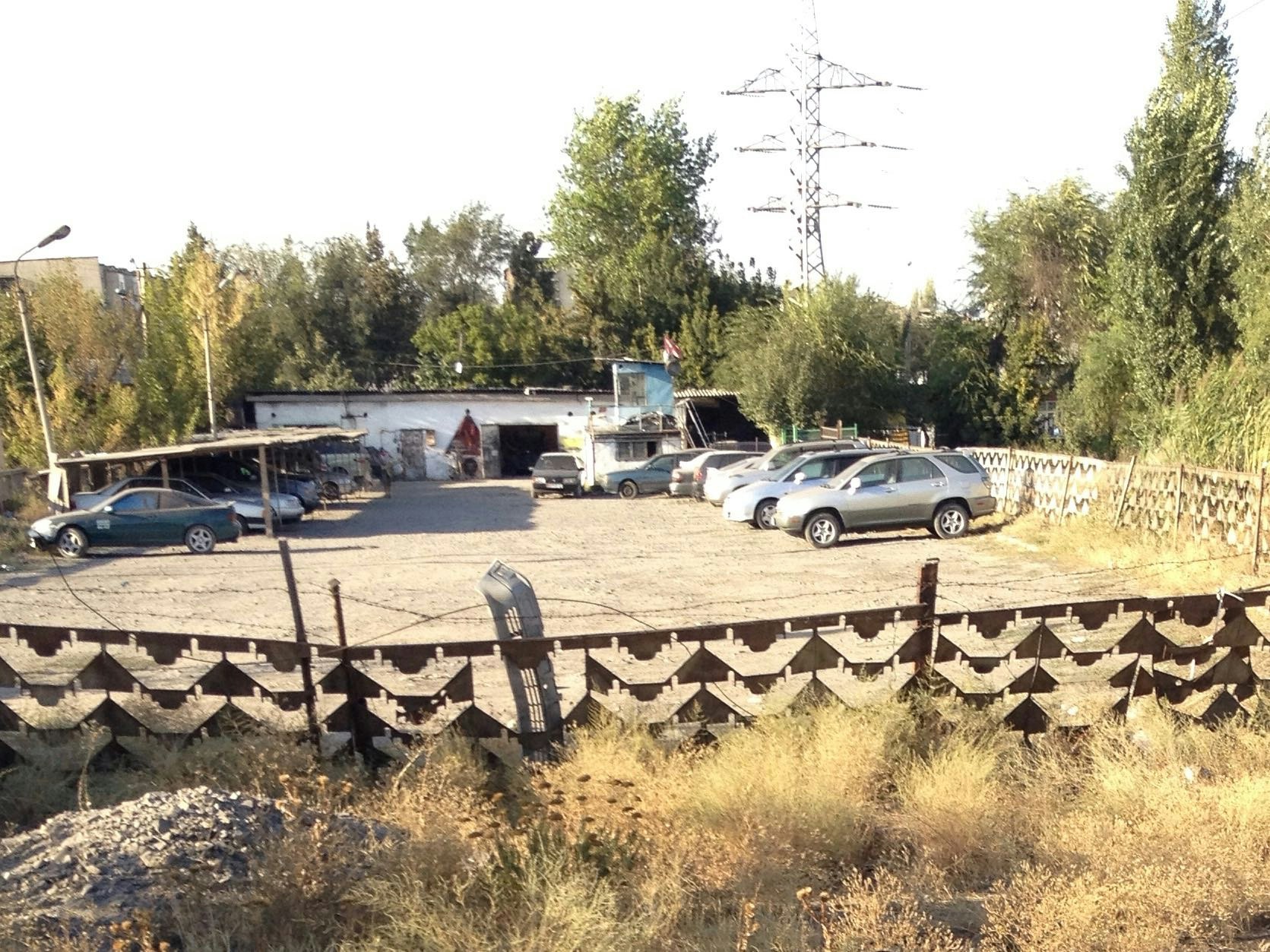
The beautiful pressed sheet metal example in blue below has a particularly attractive design, that is full of circular holes, as many fences are to be fair! The building seems to pre-date the fence and is surely a much later edition and it makes one wonder if a land-grab occurred here at some stage....

Finally, if anybody out there can get their hands on an old dusty copy of the Soviet Fencing Bible then please, please let me know. Even better if it is signed by the Soviet Fence Master himself - the great Boris Lahman. Over to you Comrade Chingum!
*a figment of my immagination
Don't forget to check out more soviet fences of Kyrgyzstan right here!

References:
Zigurds L. Zile, Programs and Problems of City Planning in the Soviet Union, 1963 WASH. U. L. Q. 19 (1963).
Chingum, The Story of the Legendary Soviet Fence "Rhombuses"
